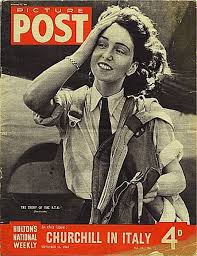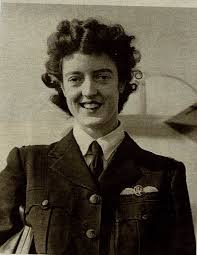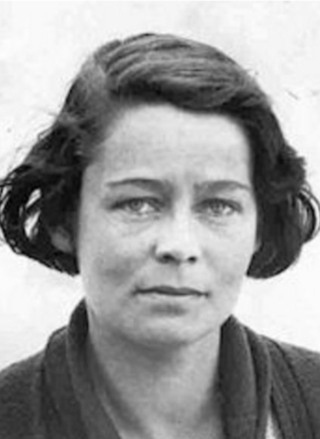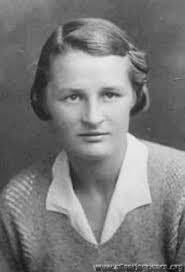Marion AliceOrr, CM was a pioneering Canadian aviator who was the first woman to run a flying school. She served with the Air Transport Auxiliary during World War II and was awarded the Order of Canada in 1986.

The Air Transport Auxiliary (ATA) was a British civilian organisation set up at the start of the Second World War with headquarters at White Waltham Airfield in Berkshire. The ATA ferried new, repaired and damaged military aircraft between factories, assembly plants, transatlantic delivery points, maintenance units (MUs), scrapyards, and active service squadrons and airfields, but not to naval aircraft carriers. It also flew service personnel on urgent duty from one place to another and performed some air ambulance work. Notably, around 10% of its pilots were women, and from 1943 they received equal pay to their male colleagues, a first for the British government.

Diana Barnato Walker MBE FRAeS was a pioneering British aviator. In World War II, she became one of the first women pilots of the Air Transport Auxiliary, flying 80 types of aircraft and delivering 260 Spitfires. In 1963, she became the first British woman to break the sound barrier, flying at Mach 1.6, which also represented a world air speed record for women.
Waikato Diocesan School for Girls is a state-integrated single-sex girls' secondary school in Hamilton, New Zealand. It is an Anglican girls' Boarding school for students from Year 9 to Year 13. It also has day students.

Jane Winstone was a New Zealand aviator. She was born in Whanganui, New Zealand in 1912 and flew in the Second World War as a pilot in the British civilian Air Transport Auxiliary and died in service.

Maureen Adele Chase Dunlop de Popp, née Dunlop, was an Anglo-Argentine pilot who flew for the British Air Transport Auxiliary (ATA) during World War II, and became notable as a pin-up on the cover of the Picture Post magazine.
Constance Ruth Leathart was a British female pilot who flew Royal Air Force aircraft on transit flights in World War Two in the Air Transport Auxiliary.

Mary Ellis was a British ferry pilot, and one of the last surviving British women pilots from the Second World War.

Freydis Sharland was a pioneering woman pilot and one of the first women to get RAF wings.

Jackie Moggridge was a pioneering pilot, the first woman to do a parachute jump in South Africa and the first female airline captain of scheduled passenger services.
Annette Elizabeth Mahon was a pioneering pilot and the only Irish woman member of the Air Transport Auxiliary.

Gabrielle Ruth Millicent Patterson was a British aviator who worked for the Air Transport Auxiliary. She was Britain's first woman flying instructor.

Mona Renee Vera Ernesta Forward was a British pilot and one of the eight founding pilots who started the women's section of the Air Transport Auxiliary.

Margaret Cunnison was a Scottish aviator and the first Scottish woman flying instructor. She was one of the first women to join the Air Transport Auxiliary.
Eleanor Wadsworth was an English second world war pilot, who served as one of the RAF's "Spitfire women". Wadsworth was the oldest surviving pilot of the Air Transport Auxiliary (ATA), before her death in December 2020.

Trevor Balfour Hunter was a New Zealand aviator. She accompanied Ted Harvie on his record-breaking flight from North Cape to Bluff in December 1933. She was the first of five New Zealand women accepted to fly with the Air Transport Auxiliary during the Second World War.

Ida Laura Veldhuyzen van Zanten was a Dutch pilot and social worker who was a member of the Dutch resistance during the Second World War and a pilot in the British Air Transport Auxiliary. She was the only woman to receive the Vliegerkruis, the Airman's Cross.
Nancy Jane Miller Livingston Stratford is an American aviator. She flew warplanes in the civilian Air Transport Auxiliary in Great Britain during World War II and was later a pioneering helicopter pilot in Alaska.
Stella "Jaye" Edwards was a British aviator. Edwards, who was nicknamed "Jaye" and "Pete", flew Royal Air Force warplanes for the Air Transport Auxiliary (ATA) during World War II.

Stefania Cecylia Wojtulanis-Karpińska, was a Polish aviator. She was a sports pilot in the inter war period and was a Captain in the Polish Air Force. She flew in the British Air Transport Auxiliary during the Second World War, when she was known as Barbara Wojtulanis. She was one of the first two Polish woman pilots to join the British Air Transport Auxiliary, the other being Anna Leska.













